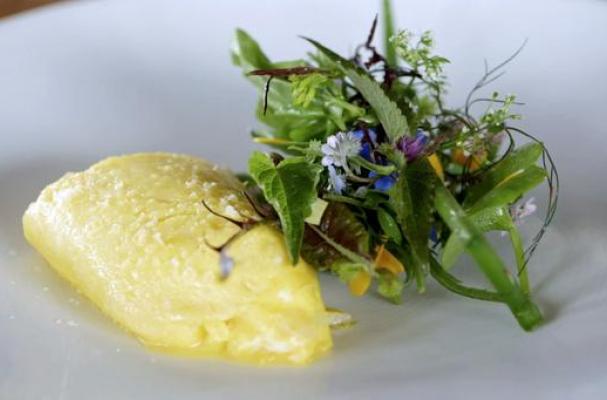
Michelin-star chef David Kinch shows how to make the perfect French omelette. This is not the ubiquitous crêpe-thin, browned on the outside omelette most of us are used to. A properly made omelette is not flipped and looks more like you're preparing scrambled eggs. The curds are just set, making it smooth on the outside (but not at all browned) and moist, if not still a bit runny, on the inside. He then gives the top a rub of butter for shine and flavor. It takes practice to master a proper French omelette, but it's a skill we should all know. Watch as Chef Kinch demonstrates:
David Kinch: An omelette is an omelette is an omelette. It's a perfect representation of what can happen to eggs when they're cooked perfectly. Eggs at room temperature, not cold out of the fridge. I'm gonna do three whole eggs.
Man 2: Because I like to do three whole eggs and then one yolk.
David Kinch: Okay, let's do that.
Man 2: We don't have to do that.
David Kinch: Let's do that.
Man 2: All right, okay.
David Kinch: Just a touch of water. I use a fork instead of a whisk because you don't want to incorporate air into it. Essentially, you just want to homogenize it, you want to bring it together. It starts to lighten up a little bit in color. Now to me, this is ready to go and I have not added any salt into this at all.
There we go.
You want it to all come together, no color on the bottom, without runny on the inside. Really, kind of the beauty of the whole thing is it's just eggs and butter, but by technique, it kind of really elevates it to a really beautiful texture.
This is key, so it's shaped. Just give it a little bath in the homemade, salted butter, just enough to make it shine. The only salt that's been added to it, we're adding to it right now. To me, that's a good omelette.
Man 2: This is delicious.
David Kinch: Would you hire me?
Man 2: I would. You can be the junior breakfast cook, the omelette bar.
David Kinch: Yeah, that's what I mean.










